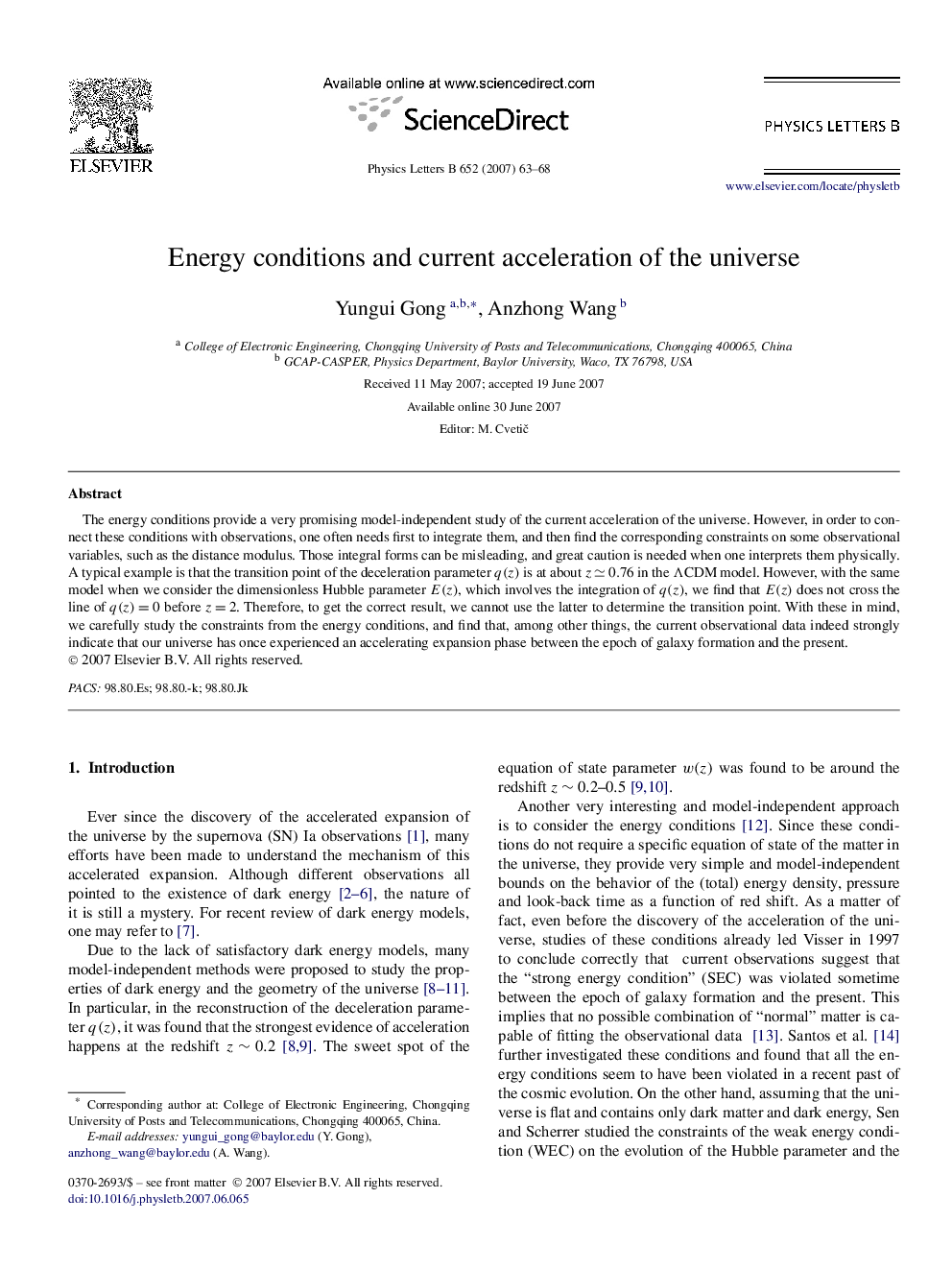| Article ID | Journal | Published Year | Pages | File Type |
|---|---|---|---|---|
| 8196664 | Physics Letters B | 2007 | 6 Pages |
Abstract
The energy conditions provide a very promising model-independent study of the current acceleration of the universe. However, in order to connect these conditions with observations, one often needs first to integrate them, and then find the corresponding constraints on some observational variables, such as the distance modulus. Those integral forms can be misleading, and great caution is needed when one interprets them physically. A typical example is that the transition point of the deceleration parameter q(z) is at about zâ0.76 in the ÎCDM model. However, with the same model when we consider the dimensionless Hubble parameter E(z), which involves the integration of q(z), we find that E(z) does not cross the line of q(z)=0 before z=2. Therefore, to get the correct result, we cannot use the latter to determine the transition point. With these in mind, we carefully study the constraints from the energy conditions, and find that, among other things, the current observational data indeed strongly indicate that our universe has once experienced an accelerating expansion phase between the epoch of galaxy formation and the present.
Related Topics
Physical Sciences and Engineering
Physics and Astronomy
Nuclear and High Energy Physics
Authors
Yungui Gong, Anzhong Wang,
